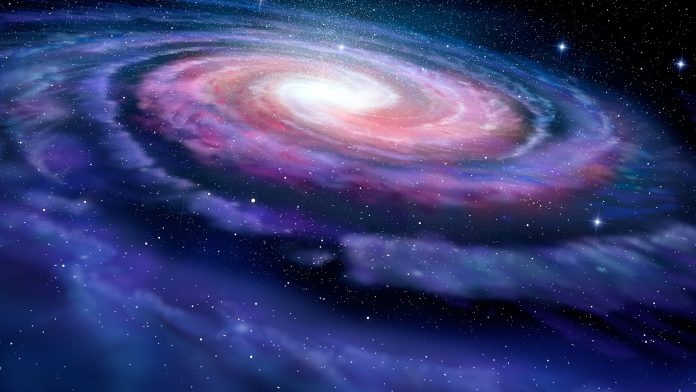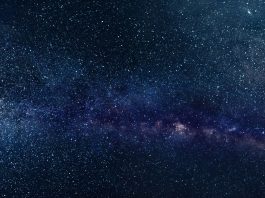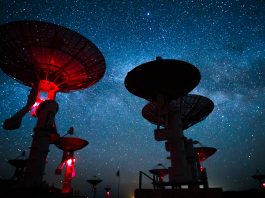Scientists from Georgia State University have discovered an explanation for the curious occurrence of massive stars situated far from their birthplace in the disk of the Milky Way.
Stars larger than the Sun have incredibly hot cores that drive nuclear energy generation at great rates. These massive stars are some of the brightest objects in our galaxy. However, due to the fact they burn through their hydrogen so fast, their lifetimes are comparatively short, at around 10 million years, whereas the Sun’s lifetime is approximately 10 billion years.
This short lifetime means that there is not much time for these stars to migrate too far from their birthplace. The majority of massive stars are observed in the flat disk area of the Milky Way, where gas clouds are dense enough to encourage star birth. This is also where astronomers discover young clusters of massive stars.
How do massive stars stray so far from their birthplace?
“Astronomers are finding massive stars far away from their place of origin, so far, in fact, that it takes longer than the star’s lifetime to get there,” explained Georgia State astronomer Douglas Gies. “How this could happen is a topic of active debate among scientists.”
This is the problem presented by HD93521, a massive star situated approximately 3,600 light years above the galaxy’s disk. The novel study conducted by the Georgia State astronomers exposes a profound discrepancy: the time needed to reach this location is greater than the anticipated age of this massive star.
The team employed a novel distance estimate from the European Space Agency’s Gaia spacecraft, alongside an exploration of the star’s spectrum, to ascertain the star’s mass and age, as well as its motion through space.
The life of HD93521
The Georgia State scientists discovered that HD93521 has a mass around 17 times greater than our Sun’s, which results in a predicted age of approximately 5 million years. However, the motion of the star suggests that its voyage from the disk has taken far longer – an estimated 39 million years.
The astronomers described this curious discrepancy between the star’s lifetime and travel time with the explanation that HD93521 left the disk as two lower-mass and longer-lived stars, as opposed to the single massive star it is today.
The group’s novel findings have been published in The Astronomical Journal.
HD93521 is one of the quickest rotating stars in the galaxy. Stars can spin up through stellar mergers where two close orbiting stars often expand over time and collide, merging into one star.
“HD93521 probably began life as a close pair of medium-mass stars that were fated to engulf each other and create the single, fast-spinning star we see today,” Gies explained.
Such intermediate mass stars live long enough to match the long flight time of HD93521.
Not a unique phenomenon
There are also stars other than HD93521 that are discovered so far away from their birthplace. Currently, Peter Wysocki, a Georgia State graduate student, is researching an example of a distant massive binary pair that is most likely a characteristic of the stage just before a merger.
The star being studied is called IT Librae, and it has an orientation that generates mutual eclipses as the two stars pass in front of each other. An inquiry into the variations in the light output and motions identified in the spectra leads to estimations of the stellar masses.
Wysocki discovered a comparable conundrum from the mass results – the anticipated lower than IT Librae’s travel time from the disk. However, the study also indicates that the lower-mass star in the pair has already started to shift much of its mass to the higher-mass star, instigating the process that could ultimately lead to a merger. This signifies that the higher-mass star is older than it seems, beginning life as a lower-mass star.
These massive stars offer remarkable proof that close pairs of stars can join together to make even larger stars, and they offer significant clues as to how rapidly rotating massive stars are can produce black holes with large spins.









